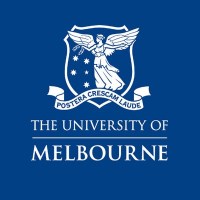ReSound Hearing Aids


ReSound hearing aid prices discounted at HEARING SAVERS.
ReSound is part of The GN Group, a global leader in intelligent audio solutions. Since the company was founded in 1943, ReSound has been known for great sound quality, design excellence and meaningful solutions that help hearing impaired people rediscover sounds. ReSound was the first to deliver 2.4GHz technology in hearing aids for direct connectivity and the world's first Made for iPhone hearing aid.
Contact HEARING SAVERS on ☎ 1800 00 4327 to SAVE $000s on the latest ReSound hearing aids.
ReSound Vivia ReSound Savi ReSound Nexia ReSound OMNIA ReSound Key ReSound Enzo ReSound Accessories-


ReSound Key 3 BTE hearing aid
ReSound
at $ 795SAVE $000s on ReSound Key hearing aids. Our price Further discounts forPensioners & Veterans* Get a Quote Today! Hear with confidence With ReSound Key, you will enjoy the clear, natural sound quality you need to join in conversations,...at $ 795 -


ReSound Key 3 RIC hearing aid
ReSound
at $ 995SAVE $000s on ReSound Key hearing aids. Our price Further discounts forPensioners & Veterans* Get a Quote Today! Hear with confidence With ReSound Key, you will enjoy the clear, natural sound quality you need to join in conversations,...at $ 995 -


ReSound Key 3 custom hearing aid
ReSound
at $ 1,045SAVE $000s on ReSound Key hearing aids. Our price Further discounts forPensioners & Veterans* Get a Quote Today! Hear with confidence With ReSound Key, you will enjoy the clear, natural sound quality you need to join in conversations,...at $ 1,045 -


ReSound Nexia CROS rechargeable
ReSound
at $ 1,095SAVE $000s on the latest ReSound Nexia hearing aids. Further discounts forPensioners & Veterans* Get a Quote Today! CROS Transmitter for single-sided deafness With its sleek design and available colour line-up, the ReSound Nexia CROS...at $ 1,095 -


ReSound Vivia CROS rechargeable
ReSound
at $ 1,195SAVE $000s on the latest ReSound Vivia hearing aids. Further discounts forPensioners & Veterans* Get a Quote Today! CROS Transmitter for single-sided deafness With its sleek design and available colour line-up, the ReSound Vivia CROS...at $ 1,195 -
Reduced


ReSound Key 4 BTE hearing aid
ReSound
Don't pay $ 1,500at $ 1,245ReSound Price CRASH! ReSound KEY hearing aids now only Reduced from $3,000 on 19 Feb 2024.You SAVE $510 per pair! Further discounts forPensioners & Veterans* Get a Quote Today! Hear with confidence With ReSound Key, you will...Don't pay $ 1,500at $ 1,245 -
Reduced


ReSound Key 4 RIC hearing aid
ReSound
Don't pay $ 1,500at $ 1,245ReSound Price CRASH! ReSound KEY hearing aids now only Reduced from $3,000 on 19 Feb 2024.You SAVE $510 per pair! Further discounts forPensioners & Veterans* Get a Quote Today! Hear with confidence With ReSound Key, you will...Don't pay $ 1,500at $ 1,245 -
Reduced


ReSound Key 4 custom hearing aid
ReSound
Don't pay $ 1,550at $ 1,285ReSound Price CRASH! ReSound KEY hearing aids now only Reduced from $3,100 on 19 Feb 2024.You SAVE $530 per pair! Further discounts forPensioners & Veterans* Get a Quote Today! Hear with confidence With ReSound Key, you will...Don't pay $ 1,550at $ 1,285 -
Reduced


ReSound Key 4 RIC rechargeable hearing aid
ReSound
Don't pay $ 1,600at $ 1,295ReSound Price CRASH! ReSound KEY hearing aids now only Reduced from $3,200 on 19 Feb 2024.You SAVE $610 per pair! Further discounts forPensioners & Veterans* Get a Quote Today! Hear with confidence With ReSound Key, you will...Don't pay $ 1,600at $ 1,295 -


ReSound Savi 3 RIE 61 hearing aid
ReSound
at $ 1,595SAVE on the latest Resound Savi hearing aids at Further discounts forPensioners & Veterans* Get a Quote Today! %%Apple%% %%Android%% %%Water%% %%Auracast%% %%3-Year%% %%Entry%% A clever choice for comfort ReSound Savi gives you...at $ 1,595 -


ReSound Savi 3 RIE 62 hearing aid
ReSound
at $ 1,595SAVE on the latest Resound Savi hearing aids at Further discounts forPensioners & Veterans* Get a Quote Today! %%Apple%% %%Android%% %%Water%% %%Auracast%% %%3-Year%% %%Entry%% A clever choice for comfort ReSound Savi gives you...at $ 1,595 -


ReSound ENZO Q 5 Power hearing aid
ReSound
at $ 1,890Discount prices on all ReSound hearing aids. Only $3,780 per pair! Get a Quote Today! Further discounts forPensioners & Veterans* So much more than just powerful With a severe-to-profound hearing loss, confidence starts with a hearing...at $ 1,890 -


ReSound ENZO Q 5 Super Power hearing aid
ReSound
at $ 1,890Discount prices on all ReSound hearing aids. Only $3,780 per pair! Get a Quote Today! Further discounts forPensioners & Veterans* So much more than just powerful With a severe-to-profound hearing loss, confidence starts with a hearing...at $ 1,890 -


ReSound Savi 4 RIE 61 hearing aid
ReSound
at $ 1,895SAVE on the latest Resound Savi hearing aids at Further discounts forPensioners & Veterans* Get a Quote Today! %%Apple%% %%Android%% %%Water%% %%Auracast%% %%3-Year%% %%Bronze%% A clever choice for comfort ReSound Savi gives...at $ 1,895 -


ReSound Savi 4 RIE 62 hearing aid
ReSound
at $ 1,895SAVE on the latest Resound Savi hearing aids at Further discounts forPensioners & Veterans* Get a Quote Today! %%Apple%% %%Android%% %%Water%% %%Auracast%% %%3-Year%% %%Bronze%% A clever choice for comfort ReSound Savi gives...at $ 1,895 -


ReSound Savi 4 microRIE rechargeable hearing aid
ReSound
at $ 1,995SAVE on the latest Resound Savi hearing aids at Further discounts forPensioners & Veterans* Get a Quote Today! %%Rechargeable%% %%Apple%% %%Android%% %%Water%% %%Auracast%% %%3-Year%% %%Bronze%% A clever choice for...at $ 1,995 -
Reduced


ReSound OMNIA 5 hearing aid
ReSound
Don't pay $ 2,180at $ 2,045ReSound Price CRASH! ReSound OMNIA hearing aids now only Reduced from $4,360 on 19 Feb 2024.You SAVE $270 per pair! Further discounts forPensioners & Veterans* Get a Quote Today! Surround yourself with what you love Life is...Don't pay $ 2,180at $ 2,045 -
Reduced
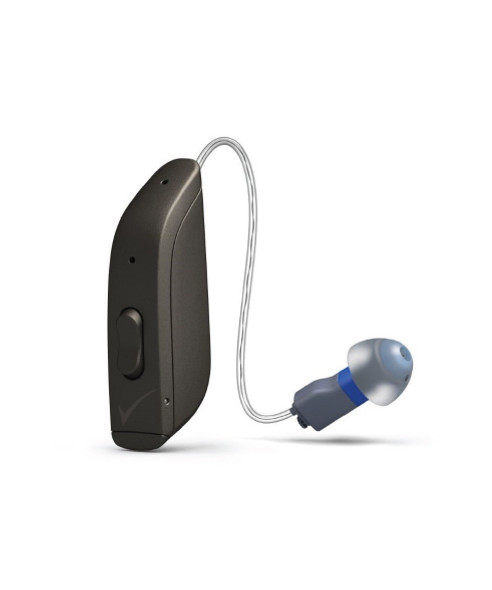

ReSound ONE-5 hearing aid
ReSound
Don't pay $ 2,200at $ 2,090ReSound Prices Slashed! ReSound ONE hearing aids now only Reduced from $4,400 on 24 Mar 2023 Further discounts forPensioners & Veterans* Get a Quote Today! FREE Upgrade to the revolutionary M&RIE receiver, valued $155 each...Don't pay $ 2,200at $ 2,090 -
Reduced


ReSound OMNIA 5 Mini rechargeable hearing aid
ReSound
Don't pay $ 2,350at $ 2,095ReSound Price CRASH! ReSound OMNIA hearing aids now only Reduced from $4,700 on 19 Feb 2024.You SAVE $510 per pair! Further discounts forPensioners & Veterans* Get a Quote Today! Super discreet hearing The ReSound OMNIA Mini is...Don't pay $ 2,350at $ 2,095 -
Reduced


ReSound Nexia 5 RIE hearing aid
ReSound
Don't pay $ 2,145at $ 2,100SAVE $000s on the latest ReSound Nexia hearing aids. Our price Further discounts forPensioners & Veterans* Get a Quote Today! Next-era hearing ReSound Nexia starts a new era for hearing technology, combining proven performance with...Don't pay $ 2,145at $ 2,100 -
Reduced
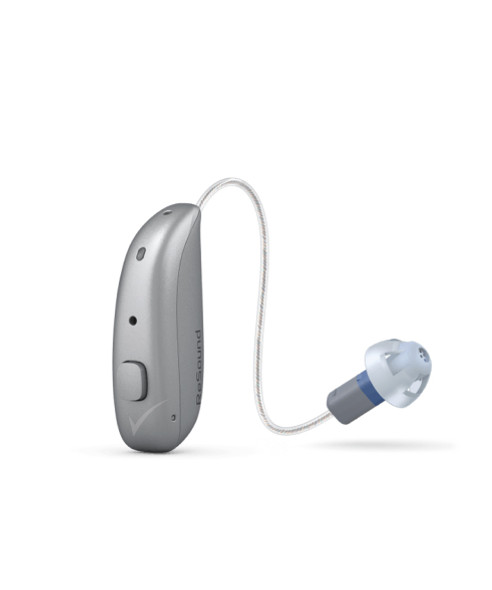
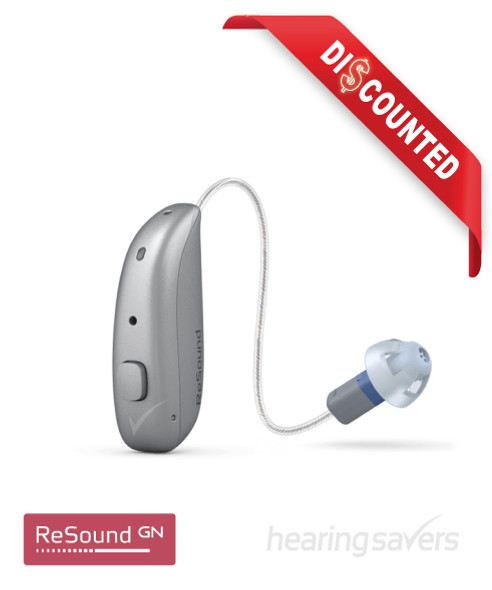
ReSound Nexia 5 microRIE rechargeable hearing aid
ReSound
Don't pay $ 2,195at $ 2,145SAVE $000s on the latest ReSound Nexia hearing aids. Our price Further discounts forPensioners & Veterans* Get a Quote Today! %%Rechargeable%% %%Apple%% %%Android%% %%Water%% %%Auracast%% %%4-Year%% %%Silver%% Next-era...Don't pay $ 2,195at $ 2,145 -
Reduced


ReSound ONE-5 rechargeable hearing aid
ReSound
Don't pay $ 2,300at $ 2,190ReSound Prices Slashed! ReSound ONE hearing aids now only Reduced from $4,600 on 24 Mar 2023 Further discounts forPensioners & Veterans* Get a Quote Today! FREE Upgrade to the revolutionary M&RIE receiver, valued $155 each...Don't pay $ 2,300at $ 2,190 -
Reduced


ReSound OMNIA 5 custom rechargeable hearing aid
ReSound
Don't pay $ 2,410at $ 2,195ReSound Price CRASH! ReSound OMNIA hearing aids now only Reduced from $4,820 on 19 Feb 2024.You SAVE $430 per pair! Further discounts forPensioners & Veterans* Get a Quote Today! Great hearing looks good Think of everything you...Don't pay $ 2,410at $ 2,195 -
Reduced

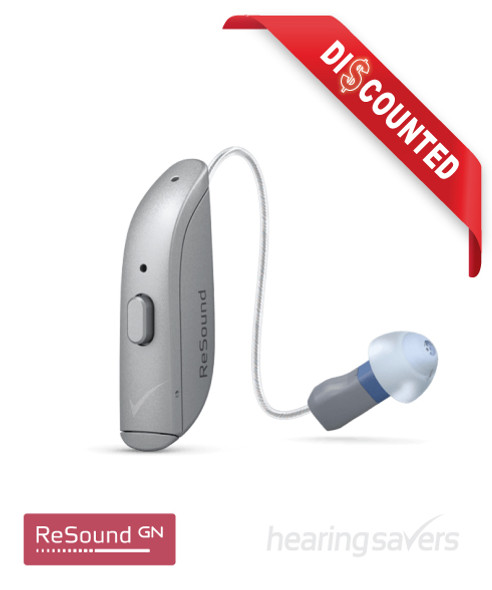
ReSound Nexia 7 RIE hearing aid
ReSound
Don't pay $ 2,495at $ 2,200SAVE $000s on the latest ReSound Nexia hearing aids. Our price Further discounts forPensioners & Veterans* Get a Quote Today! Next-era hearing ReSound Nexia starts a new era for hearing technology, combining proven performance with...Don't pay $ 2,495at $ 2,200 -
Reduced


ReSound Vivia 5 RIE 61 hearing aid
ReSound
Don't pay $ 2,545at $ 2,245SAVE on the latest Resound Vivia AI hearing aids at Further discounts forPensioners & Veterans* Get a Quote Today! %%Apple%% %%Android%% %%Water%% %%Auracast%% %%4-Year%% %%Silver%% Celebrate natural hearing with...Don't pay $ 2,545at $ 2,245 -
Reduced


ReSound Vivia 5 RIE 62 hearing aid
ReSound
Don't pay $ 2,545at $ 2,245SAVE on the latest Resound Vivia AI hearing aids at Further discounts forPensioners & Veterans* Get a Quote Today! %%Apple%% %%Android%% %%Water%% %%Auracast%% %%4-Year%% %%Silver%% Celebrate natural hearing with...Don't pay $ 2,545at $ 2,245 -
Reduced


ReSound ONE 5 custom rechargeable hearing aid
ReSound
Don't pay $ 2,390at $ 2,250ReSound Prices Slashed! ReSound ONE hearing aids now only Reduced from $4,780 on 24 Mar 2023 Further discounts forPensioners & Veterans* Get a Quote Today! Great hearing looks good Think of everything you want in a hearing aid...Don't pay $ 2,390at $ 2,250 -
Reduced


ReSound Vivia 5 microRIE rechargeable hearing aid
ReSound
Don't pay $ 2,595at $ 2,295SAVE on the latest Resound Vivia AI hearing aids at Further discounts forPensioners & Veterans* Get a Quote Today! %%Rechargeable%% %%Apple%% %%Android%% %%Water%% %%Auracast%% %%4-Year%% %%Silver%% Celebrate natural hearing...Don't pay $ 2,595at $ 2,295 -


ReSound Nexia 5 CIC custom hearing aid
ReSound
at $ 2,395SAVE on the latest ReSound Nexia hearing aids at Further discounts forPensioners & Veterans* Get a Quote Today! Next-era hearing ReSound Nexia starts a new era for hearing technology, combining proven performance with cutting-edge...at $ 2,395 -
Reduced


ReSound Vivia 7 RIE 61 hearing aid
ReSound
Don't pay $ 2,895at $ 2,395SAVE on the latest Resound Vivia AI hearing aids at Further discounts forPensioners & Veterans* Get a Quote Today! %%Apple%% %%Android%% %%Water%% %%Auracast%% %%4-Year%% %%Gold%% Celebrate natural hearing with Vivia ReSound...Don't pay $ 2,895at $ 2,395 -
Reduced


ReSound Vivia 7 RIE 62 hearing aid
ReSound
Don't pay $ 2,895at $ 2,395SAVE on the latest Resound Vivia AI hearing aids at Further discounts forPensioners & Veterans* Get a Quote Today! %%Apple%% %%Android%% %%Water%% %%Auracast%% %%4-Year%% %%Gold%% Celebrate natural hearing with Vivia ReSound...Don't pay $ 2,895at $ 2,395 -
Reduced


ReSound Nexia 7 microRIE rechargeable hearing aid
ReSound
Don't pay $ 2,545at $ 2,440SAVE $000s on the latest ReSound Nexia hearing aids. Our price Further discounts forPensioners & Veterans* Get a Quote Today! %%Rechargeable%% %%Apple%% %%Android%% %%Water%% %%Auracast%% %%4-Year%% %%Gold%% Next-era...Don't pay $ 2,545at $ 2,440 -
Reduced


ReSound OMNIA 7 hearing aid
ReSound
Don't pay $ 2,770at $ 2,445ReSound Price CRASH! ReSound OMNIA hearing aids now only Reduced from $5,540 on 19 Feb 2024.You SAVE $650 per pair! Further discounts forPensioners & Veterans* Get a Quote Today! Surround yourself with what you love Life is...Don't pay $ 2,770at $ 2,445 -


ReSound Nexia 5 custom rechargeable hearing aid
ReSound
at $ 2,475SAVE on the latest ReSound Nexia hearing aids at Further discounts forPensioners & Veterans* Get a Quote Today! Next-era hearing ReSound Nexia starts a new era for hearing technology, combining proven performance with cutting-edge...at $ 2,475 -
Reduced


ReSound ONE-7 hearing aid
ReSound
Don't pay $ 2,700at $ 2,490ReSound Prices Slashed! ReSound ONE hearing aids now only Reduced from $5,400 on 24 Mar 2023 Further discounts forPensioners & Veterans* Get a Quote Today! FREE Upgrade to the revolutionary M&RIE receiver, valued $155 each...Don't pay $ 2,700at $ 2,490 -
Reduced


ReSound OMNIA 7 Mini rechargeable hearing aid
ReSound
Don't pay $ 3,020at $ 2,495ReSound Price CRASH! ReSound OMNIA hearing aids now only Reduced from $6,040 on 19 Feb 2024.You SAVE $1,050 per pair! Further discounts forPensioners & Veterans* Get a Quote Today! Super discreet hearing The ReSound OMNIA Mini...Don't pay $ 3,020at $ 2,495 -
Reduced


ReSound Vivia 7 microRIE rechargeable hearing aid
ReSound
Don't pay $ 2,995at $ 2,495SAVE on the latest Resound Vivia AI hearing aids at Further discounts forPensioners & Veterans* Get a Quote Today! %%Rechargeable%% %%Apple%% %%Android%% %%Water%% %%Auracast%% %%4-Year%% %%Gold%% Celebrate natural hearing...Don't pay $ 2,995at $ 2,495 -
Reduced


ReSound ONE-7 rechargeable hearing aid
ReSound
Don't pay $ 2,800at $ 2,520ReSound Prices Slashed! ReSound ONE hearing aids now only Reduced from $5,600 on 24 Mar 2023 Further discounts forPensioners & Veterans* Get a Quote Today! FREE Upgrade to the revolutionary M&RIE receiver, valued $155 each...Don't pay $ 2,800at $ 2,520 -
Reduced


ReSound OMNIA 7 custom rechargeable hearing aid
ReSound
Don't pay $ 3,070at $ 2,595ReSound Price CRASH! ReSound OMNIA hearing aids now only Reduced from $6,140 on 19 Feb 2024.You SAVE $950 per pair! Further discounts forPensioners & Veterans* Get a Quote Today! Great hearing looks good Think of everything you...Don't pay $ 3,070at $ 2,595 -
Reduced


ReSound Nexia 9 RIE hearing aid
ReSound
Don't pay $ 2,945at $ 2,700SAVE $000s on the latest ReSound Nexia hearing aids. Our price Further discounts forPensioners & Veterans* Get a Quote Today! Next-era hearing ReSound Nexia starts a new era for hearing technology, combining proven performance with...Don't pay $ 2,945at $ 2,700 -
Reduced


ReSound ONE 7 custom rechargeable hearing aid
ReSound
Don't pay $ 2,880at $ 2,710ReSound Prices Slashed! ReSound ONE hearing aids now only Reduced from $5,760 on 24 Mar 2023 Further discounts forPensioners & Veterans* Get a Quote Today! Great hearing looks good Think of everything you want in a hearing aid...Don't pay $ 2,880at $ 2,710 -


ReSound Nexia 7 CIC custom hearing aid
ReSound
at $ 2,745SAVE on the latest ReSound Nexia hearing aids at Further discounts forPensioners & Veterans* Get a Quote Today! Next-era hearing ReSound Nexia starts a new era for hearing technology, combining proven performance with cutting-edge...at $ 2,745 -


ReSound Nexia 7 custom rechargeable hearing aid
ReSound
at $ 2,845SAVE on the latest ReSound Nexia hearing aids at Further discounts forPensioners & Veterans* Get a Quote Today! Next-era hearing ReSound Nexia starts a new era for hearing technology, combining proven performance with cutting-edge...at $ 2,845 -
Reduced

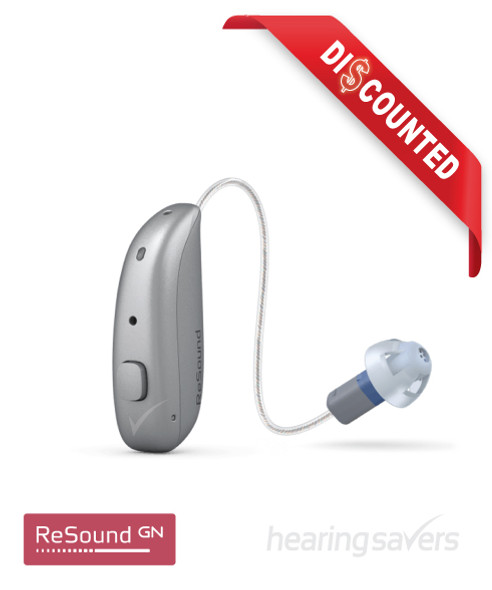
ReSound Nexia 9 microRIE rechargeable hearing aid
ReSound
Don't pay $ 2,995at $ 2,890SAVE $000s on the latest ReSound Nexia hearing aids. Our price Further discounts forPensioners & Veterans* Get a Quote Today! %%Rechargeable%% %%Apple%% %%Android%% %%Water%% %%Auracast%% %%4-Year%% %%Platinum%% Next-era...Don't pay $ 2,995at $ 2,890 -
Reduced


ReSound OMNIA 9 hearing aid
ReSound
Don't pay $ 3,370at $ 2,895ReSound Price CRASH! ReSound OMNIA hearing aids now only Reduced from $6,740 on 19 Feb 2024.You SAVE $950 per pair! Further discounts forPensioners & Veterans* Get a Quote Today! Surround yourself with what you love Life is...Don't pay $ 3,370at $ 2,895 -


ReSound ENZO Q 7 Power hearing aid
ReSound
at $ 2,940Discount prices on all ReSound hearing aids. Only $5,880 per pair! Get a Quote Today! Further discounts forPensioners & Veterans* So much more than just powerful With a severe-to-profound hearing loss, confidence starts with a hearing...at $ 2,940 -


ReSound ENZO Q 7 Super Power hearing aid
ReSound
at $ 2,940Discount prices on all ReSound hearing aids. Only $5,880 per pair! Get a Quote Today! Further discounts forPensioners & Veterans* So much more than just powerful With a severe-to-profound hearing loss, confidence starts with a hearing...at $ 2,940 -
Reduced


ReSound OMNIA 9 Mini rechargeable hearing aid
ReSound
Don't pay $ 3,480at $ 2,945ReSound Price CRASH! ReSound OMNIA hearing aids now only Reduced from $6,960 on 19 Feb 2024.You SAVE $1,070 per pair! Further discounts forPensioners & Veterans* Get a Quote Today! Super discreet hearing The ReSound OMNIA Mini...Don't pay $ 3,480at $ 2,945 -
Reduced


ReSound ONE-9 hearing aid
ReSound
Don't pay $ 3,700at $ 3,000ReSound Prices Slashed! ReSound ONE hearing aids now only Reduced from $7,400 on 24 Mar 2023 Further discounts forPensioners & Veterans* Get a Quote Today! FREE Upgrade to the revolutionary M&RIE receiver, valued $155 each...Don't pay $ 3,700at $ 3,000 -
Reduced


ReSound OMNIA 9 custom rechargeable hearing aid
ReSound
Don't pay $ 3,490at $ 3,045ReSound Price CRASH! ReSound OMNIA hearing aids now only Reduced from $6,980 on 19 Feb 2024.You SAVE $890 per pair! Further discounts forPensioners & Veterans* Get a Quote Today! Great hearing looks good Think of everything you...Don't pay $ 3,490at $ 3,045 -
Reduced


ReSound Vivia 9 RIE 61 hearing aid
ReSound
Don't pay $ 3,395at $ 3,145SAVE on the latest Resound Vivia AI hearing aids at Further discounts forPensioners & Veterans* Get a Quote Today! %%Apple%% %%Android%% %%Water%% %%Auracast%% %%4-Year%% %%Platinum%% Celebrate natural hearing with...Don't pay $ 3,395at $ 3,145 -
Reduced


ReSound Vivia 9 RIE 62 hearing aid
ReSound
Don't pay $ 3,395at $ 3,145SAVE on the latest Resound Vivia AI hearing aids at Further discounts forPensioners & Veterans* Get a Quote Today! %%Apple%% %%Android%% %%Water%% %%Auracast%% %%4-Year%% %%Platinum%% Celebrate natural hearing with...Don't pay $ 3,395at $ 3,145 -
Reduced
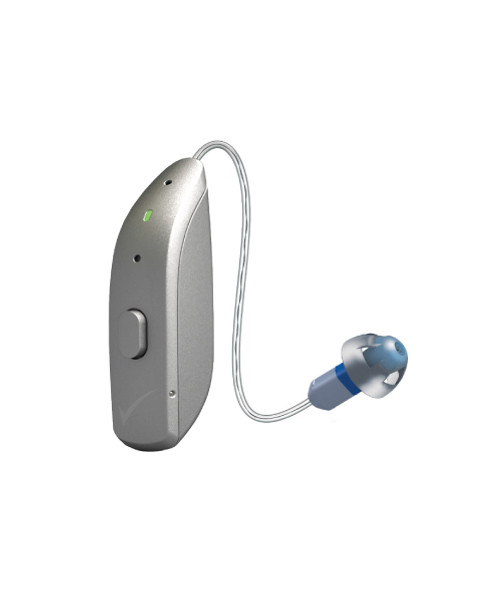

ReSound ONE-9 rechargeable hearing aid
ReSound
Don't pay $ 3,800at $ 3,170ReSound Prices Slashed! ReSound ONE hearing aids now only Reduced from $7,600 on 24 Mar 2023 Further discounts forPensioners & Veterans* Get a Quote Today! FREE Upgrade to the revolutionary M&RIE receiver, valued $155 each...Don't pay $ 3,800at $ 3,170 -
Reduced


ReSound Vivia 9 microRIE rechargeable hearing aid
ReSound
Don't pay $ 3,495at $ 3,245SAVE on the latest Resound Vivia AI hearing aids at Further discounts forPensioners & Veterans* Get a Quote Today! %%AI%% %%Rechargeable%% %%Apple%% %%Android%% %%Water%% %%Auracast%% %%4-Year%% %%Platinum%% World’s smallest...Don't pay $ 3,495at $ 3,245 -
Reduced


ReSound ONE 9 custom rechargeable hearing aid
ReSound
Don't pay $ 3,870at $ 3,270ReSound Prices Slashed! ReSound ONE hearing aids now only Reduced from $7,740 on 24 Mar 2023 Further discounts forPensioners & Veterans* Get a Quote Today! Great hearing looks good Think of everything you want in a hearing aid...Don't pay $ 3,870at $ 3,270 -


ReSound Nexia 9 CIC custom hearing aid
ReSound
at $ 3,295SAVE on the latest ReSound Nexia hearing aids at Further discounts forPensioners & Veterans* Get a Quote Today! Next-era hearing ReSound Nexia starts a new era for hearing technology, combining proven performance with cutting-edge...at $ 3,295 -


ReSound Nexia 9 custom rechargeable hearing aid
ReSound
at $ 3,395SAVE on the latest ReSound Nexia hearing aids at Further discounts forPensioners & Veterans* Get a Quote Today! Next-era hearing ReSound Nexia starts a new era for hearing technology, combining proven performance with cutting-edge...at $ 3,395 -


ReSound ENZO Q 9 Power hearing aid
ReSound
at $ 3,850Discount prices on all ReSound hearing aids. Only $7,700 per pair! Get a Quote Today! Further discounts forPensioners & Veterans* So much more than just powerful With a severe-to-profound hearing loss, confidence starts with a hearing...at $ 3,850 -


ReSound ENZO Q 9 Super Power hearing aid
ReSound
at $ 3,850Discount prices on all ReSound hearing aids. Only $7,700 per pair! Get a Quote Today! Further discounts forPensioners & Veterans* So much more than just powerful With a severe-to-profound hearing loss, confidence starts with a hearing...at $ 3,850



